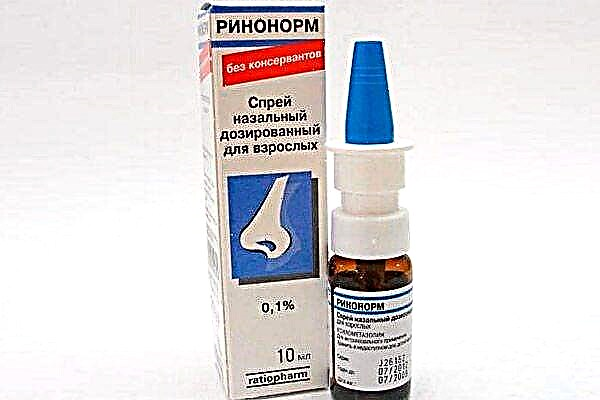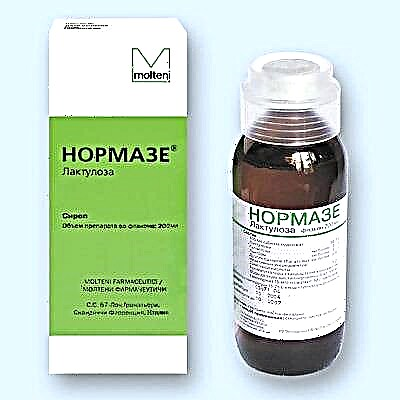
While waiting for the baby, every woman studies information about the first days in the hospital. The process of childbirth and the entire time spent in the walls of the maternity hospital is scary, but still during this period, the young mother will be under the supervision of the medical staff. Difficulties can arise after discharge, so it is worth knowing how to care for a newborn baby in advance.
Who will teach you to look after?
The issues of caring for newborn toddlers are discussed in courses for expectant mothers, so if a pregnant woman attends such classes, she will theoretically be prepared for the upcoming care of the baby. Also, the expectant mother can get information about caring for a baby from special magazines and books.

They should also teach in practice how to care for an infant and explain its basic principles in a maternity hospital. The pediatric nurse and pediatrician will tell and show the woman in labor all the steps that she will need to take care of the baby. The first toilet of the baby is carried out by a nurse, and then, having received step-by-step instructions, the young mother, under the supervision of a nurse, performs basic hygiene procedures on her own.
In addition, immediately after discharge, the mother with the newborn baby should be visited by the local pediatrician together with the nurse who is carrying out the patronage. They can be asked any questions regarding the care of the baby and the health of the baby. In advance
Maternity hospital care
Immediately after birth, the baby is tied up with the umbilical cord with special sterile clamps. Having wrapped the baby in a diaper, the baby is transferred to a heated table for the first hygiene procedures. The midwife takes a sterile napkin, dips it in sterile oil, and then partially wipes the newborn from the original lubricant. Next, the toddler is weighed and measured.
When the mother and baby are transferred to the ward, they are visited by a nurse or pediatrician, showing the woman how to handle the umbilical cord, as well as how to wash the baby under running water. Every morning, a newborn is given a morning toilet in the maternity hospital, which includes washing the face and eyes, as well as processing the remainder of the umbilical cord. The nose and ears are rinsed as needed.

Daily morning care
Once discharged, a newborn baby should begin with a shower every morning. To do this, a cotton pad is dipped in boiled warm water and wrung out, after which it is wiped with a damp disc:
- Baby's face.
- Little eyes. Movement should be from the outer corners towards the nose. A separate cotton pad is used for each eye.
- Baby ears. You need to wipe the skin behind the ears and curls of the shell.
- Baby's neck.
In addition, the mother should examine the entire skin of the baby daily and detect redness in the folds in time. When diaper rash appears, the baby is shown air baths and special cosmetics.
In the next video, Ph.D. Ainur Tazhina, together with a visiting doctor, will help you figure out how to properly care for a newborn.
Navel treatment
A newborn's navel usually heals within the first two weeks of a baby's life. The navel should be repaired until complete healing.

After bathing, the wound that remains after the umbilical cord has fallen off should be treated as follows:
- For processing, you need to prepare an antiseptic, cotton swabs and a peroxide solution.
- Mom needs to wash her hands.
- A cotton swab is moistened with peroxide, after which the wound is treated so that it is cleared of discharge.
- Remove the remaining peroxide with a dry stick.
- Soak another cotton swab in an antiseptic and treat the navel. Most often, brilliant green is used, but it can also be chlorophyllip, iodine solution or calendula tincture.
- Try not to touch the skin when processing.
Washing and diapers
After each stool, a newborn baby should be washed. If there was no stool, washing is carried out every 2-3 hours. This procedure is carried out under running water, as a urinary tract infection may occur due to washing in the tub or basin. Remember to make sure that the water that comes out of the tap is at a comfortable temperature for the baby. When washing a newborn girl, you should move from front to back.
For information on how to bathe a newborn baby, see the next video.
When washing is complete, place the baby on the changing table or sofa, then blotting away the water from the skin using a clean diaper. Next, treat the folds with a cotton ball lubricated with vegetable oil. You can also use baby cream to treat folds.
Newborn diapers can be either disposable or reusable. A baby should not be in a disposable diaper for more than 4 hours. Putting a diaper on a newborn baby so that the navel remains open. This will help the wound heal faster. During the day, the baby should spend some time without a diaper.
For the rules of daily newborn care, see the following video.
Weekly care
Such care includes procedures that are not performed every day, but are performed as needed.
Spout care
Newborn babies have tiny nasal passages, so even with a slight blockage, breathing of the crumbs becomes difficult. To clean the baby's nose, they use flagella, which are twisted from cotton wool. They are moistened in vegetable or vaseline oil, after which a maximum of 1 cm is introduced into the spout with a rotational movement. You can also wet the cotton flag with plain boiled water or breast milk.
A separate flagellum is used for each nasal passage. Never use cotton swabs to clean the newborn's nose.

How to do it correctly, see the video.
Ear care
Earwax is released normally and special cotton-tipped sticks should be used to remove excess wax. Since the ears of newborns are very small, such sticks should be with a restraint so that the stick does not penetrate too deeply and does not irritate the eardrum.
Instead of a stick, you can use a cotton flagella, but you cannot insert it into the ear canal. Also, do not rub your ears too much. To make the sulfur easier to remove, the cotton wool can be slightly moistened with boiled water, but the water should not drip from the cotton wool.
Nail care
In many newborns, the length of the nails immediately after birth is such that they need to be cut off in the hospital. Marigolds grow in babies very quickly, but they are very thin, so they often bend or break.
Nails are trimmed weekly with tweezers or nail scissors, being careful not to cut too hard so as not to hurt the skin on the fingers. On the baby's handles, the edges of the nail need to be slightly rounded, and on the legs, the nail should be cut evenly. It is convenient for newborns to cut their nails during sleep, then the procedure will not disturb the baby.

For information on how to process the nails of newborn children, see the next video by Olga Vasilievna Parshikova.
Bathing
For the first time, it is allowed to bathe a newborn on the same day when the baby and her mother were discharged from the hospital.
The particulars of the procedure should be explained by the visiting nurse:
- It is most convenient to bathe the baby before feeding, which will be the penultimate one.
- The newborn should be bathed in a separate bath until the navel is completely healed.
- The average duration of the procedure is three to seven minutes.
- Until the moment when the umbilical wound is completely healed, bathing the crumbs should be carried out in boiled water.
- The optimal parameters of the air temperature in the room where the bathing is carried out is called + 24 + 26 ° C.
- When bathing, there should be no draft in the room.
- Before the procedure, the bath should be washed with soap, as well as scalded with boiling water.
- Before filling the tub with water, prepare everything you need for bathing. You need to put boiled water, baby soap, a soft fleece mitten, a thermometer for water, a pouring jug, a towel, oil or cream for treatment after bathing, clean clothes next to the bath.
- The hands of a person bathing an infant should be washed with soap and with clipped nails. Rings and watches should be removed before the procedure.
- It is advised to put a diaper at the bottom of the bath, and then pour water, the temperature of which should be about + 37 ° C.
- Water is poured to the level of 10-15 cm so that after immersion in it, the head and top of the baby's chest remain above the water.
- Lower the baby slowly, starting with the legs. The head is kept on the elbow, and the crumbs are lathered with the other hand. At the same time, you should not rub the baby, so as not to damage the delicate skin.
- After washing off the soap, the crumbs are turned with their backs up to pour boiled clean water from a jug, the temperature of which should be one degree lower than the temperature of the water when swimming.
- Having wrapped the baby in a towel (it is not advised to rub the skin at the same time), the folds are treated with oil or cream, then they put the baby in clean clothes, give a little rest and feed.
- After the navel has healed, you can start bathing your baby in a regular bath using tap water. Bathing time begins to increase to 30-40 minutes.
Every day, only the buttocks and genitals are washed with soap. It is recommended to wash the whole body with soap no more than once or twice a week.

Walking
The first walk with a newborn in summer can be done on the first day after discharge. In autumn, winter and spring, the child is taken outside two to three days after discharge and only at temperatures above -5 ° C.
The duration of the first walks should be 10-15 minutes, and by the end of the first month of life, the total stay of the baby in the fresh air should be at least 1.5 hours. If it's cold outside, it is recommended to walk for 20-30 minutes several times a day.
Clothing
Many mothers immediately dress the newborn in slips, bodysuits, blouses and rompers, but many experienced mothers advise to learn how to swaddle the baby. Thanks to swaddling, the baby feels more comfortable, because it was cramped in her mother's stomach and after giving birth, the baby in the first days had not yet adapted to the huge space around. Swaddling can be full body or with free handles. The diaper is wrapped loosely so that the baby can freely move his legs and arms under it.

Clothes for a newborn baby need to be soft and not tight. If the air temperature in the room is + 20 ° + 22 ° C, the cap is not needed. The selection of clothes takes into account the weather and the season, as well as the health of the toddler. It is important to choose such clothes so that the baby does not freeze in it, but also so that the baby is not too hot. The best advice for dressing your baby is to dress your baby in the same way as your mother is dressed, plus add one layer of clothing.
Microclimate in the house
Keeping the home at a certain temperature and humidity is very important for caring for a newborn. In winter, the temperature in the room should not be higher than + 22 ° С, and in summer - not higher than + 24 ° С. The best temperature for a night's sleep for newborns is called + 19 ° C. The optimal parameters of humidity in the room are from 50 to 70%. Every day, wet cleaning is carried out in the room where the newborn is constantly staying.
Watch the next lecture "Newborn care", which is given by Ekaterina Ivanovna Kovbasko, a pediatrician of the highest category.



